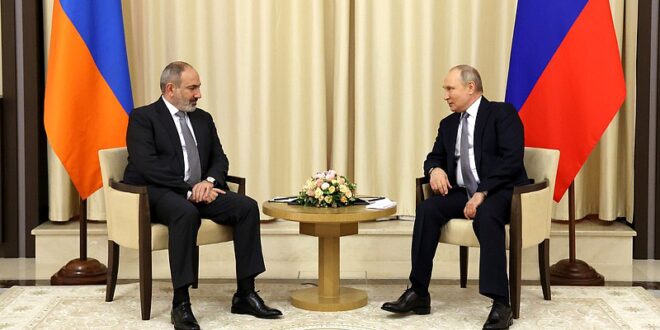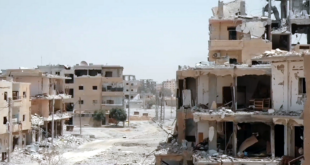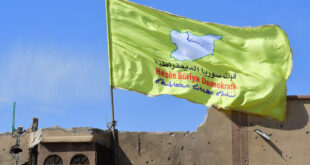Some Europeans, Americans, and Canadians do not want to accept the fact that Armenia is second only to Belarus in being a Russian satellite state. Instead, they treat Armenia as a budding and prospective candidate for European integration, ignoring the impossibility of Armenia being allowed by the Kremlin to do a ‘Brexit’ from Russian-led and controlled organisations in Eurasia.
This month the Economist published a breakdown of Russia’s friends describing them as a ‘motley – and shrinking – crew.’ The table of what the Economist called ‘Putin’s Pals’ was compiled using 11 different measures of support and potential for pressure in the military, diplomatic and energy and economic fields. Armenia came a close second to Belarus as ‘Putin’s Pals.’
Belarus, Armenia, Kazakhstan, Kyrgyzstan and Tajikistan are what the Economist call the ‘B Team’ and the ‘the coalition of the failing.’ All five are members of the Russian-led CSTO (Collective Security Treaty) meaning they are bound by treaty to assist each other if attacked. Yet none of them has supported Russia’s war in Ukraine with troops and all – except Belarus – have abstained in UN votes condemning Russia’s invasion and annexation of Ukrainian territory. Belarus has allowed its territory to be used as an invasion staging area and for missile attacks against Ukraine but has resisted sending its troops into battle against Ukraine. Self-declared president Alexander Lukashenka is afraid his troops would surrender or defect to Belarusian battalions fighting against his regime as soon as the cross the border into Ukraine.
The Economist drew up ‘Putin’s Pals’ by investigating treaties Armenia has with Russia, if they have Russian troops on their soil and do they use Russian arms. The answer to all three questions is yes for Armenia. Russia and Armenia have signed military agreements since the early 1990s when Soviet and then Russian troops assisted it in defeating Azerbaijan in the First Karabakh War and occupying twenty percent of its territory. Based on August 1992 and March 1995 treaties, Russia has two bases in Gyumri and at Yerevan airport. Armenian officers train at Russian military academies and most of Armenia’s military equipment is Russian.
Prior to Russia’s invasion of Ukraine there were rumoured to be plans to expand the number of Russian bases in Armenia. In February 2021, Armenian Defence Minister Vagharshak Harutyunyan raised the possibility of ‘redeploying some military formation of the [102nd] Russian base to the eastern part of Armenia.’ The possible location was the Vardenis region, southeast of Lake Sevan. This was an area with Azerbaijani forces based nearby in the Kalbajar district which was returned in accordance with the November 2020 ceasefire agreement.
Russian military bases in Armenia are de facto permanent. In August 2010, Armenian President Serzh Sargsyan and Russian President Dmitry Medvedev signed an agreement extending these Russian military bases for 49 years from 1995-2044. It is interesting that 2044 was also the date that pro-Russian President of Ukraine Viktor Yanukovych extended the base of the Black Sea Fleet in Sevastopol in the 2010 ‘Kharkiv Accords.’
Armenia is a founding member of Russia’s alternative to NATO, the CSTO, which it joined in 1992 in the year it won its victory in the First Karabakh War with Russian military assistance. Prime Minister Nikol Pashinyan is unhappy with the CSTO for not intervening on Armenia’s side in the Second Karabakh War, ignoring the fact the war was fought on occupied Azerbaijani territory and Armenia’s territorial integrity was never threatened. Pashinyan is also unhappy with Russian peacekeeping forces because they have not intervened on Armenia’s side in border disputes, forgetting there would be no need for these forces and no military clashes if Yerevan agreed to sign a post-conflict peace treaty with Azerbaijan. Yerevan has been unwilling to sign a treaty because most Armenians refuse to accept the former Soviet republican boundary as an international border, a step that would include accepting Karabakh is part of Azerbaijan.
Unusually, and uniquely in the former USSR, Armenia’s borders are controlled by Russian border guard troops based on a treaty signed in September 1992. Russian border guard troops are based in Gyumri, Armavir, Artashat, Meghri and at Zvartnots airport. Russia’s border guard troops are under the control of the FSB, Russia’s Federal Security Service whose responsibility is internal Russian security but also stretches to cover the entire former USSR. In the USSR, the border guards came under the control of the KGB. R
After the 2020 ceasefire, Russia expanded the presence of FSB border guard troops to five locations in Armenia, including two on the border with Nakhichevan (Yeraskh, Paruyr Sevak), two on the border with Iran (Meghri, Sghrt), and one in Tegh. The FSB expanded the number of FSB officers to the Armenia-Azerbaijan border. Russian border guard troops were also stationed in the villages of Vorotan and Shurnukh, on a 21 km section of the Goris-Kapan highway, in Kapan (near the newly built airport) and the Meghri region on the Armenian-Iranian border.
In the latter phase of the Second Karabakh War, Russia transferred some military forces to two locations near Armenia’s border with Azerbaijan. The first was near the village of Tegh on the highway linking Armenia and Karabakh and the second was a reinforcement of existing Russian forces in Meghri. A second expansion was the creation of a Russian military outpost in Yeraskh, near the border with Azerbaijan’s Nakhichevan region, close to Tigranashen.
Again, unusually in the former USSR, Russian military police are deployed in and patrol Gyumri and Yerevan. Russia’s Alpha counter-terrorism special forces (spetsnaz) group, part of the FSB, are stationed at the military police headquarters in Yerevan. Aplha spetsnaz reinforcements have been flown into Armenia during crises, such as in October 1999 when five terrorists entered parliament and assassinated Prime Minister Vazgen Sargsyan, Parliament Speaker Karen Demirchyan and several other Armenian politicians.
In addition to Russia, Armenia has developed close political, diplomatic and military ties with Iran whose drones it has assisted in delivering to Russia that the Kremlin uses to attack critical infrastructure and innocent civilians. Iran regularly holds large military exercises on the border with Azerbaijan to pressure Baku over its relations with Armenia. In January, Iranian terrorists attacked the Azerbaijani embassy in Tehran leading to one fatality and two wounded.
The Economist looked at diplomatic ties to determine if countries were ‘Putin’s friends.’ Armenia has very close diplomatic ties with Russia and Iran in what is a Moscow-Yerevan-Tehran axis. After Russia’s 2014 invasion of Crimea, Armenia voted against UN resolutions denouncing the annexation. Armenian diplomats and politicians argued that ‘self-determination’ for Crimea should be the basis for the ‘self-determination’ of Karabakh (or what Armenian nationalists call Artsakh). This had no basis in international law because the UN definition of ‘self-determination’ only applies to states and not to parts of countries. If ‘self-determination’ was applied across the board, there would be chaos across the globe; indeed, many regions of the Russian Federation would claim the right to break away from Moscow.
Armenia has abstained on UN votes that condemned Russia’s 24 February 2022 invasion of Ukraine and Russia’s 30 September 2022 annexation of four Ukrainian regions. Georgia and Moldova voted in favour of UN resolutions condemning Russia’s invasion and annexation while most Eurasian states like Armenia chose to abstain. Of the 12 Eurasian states outside NATO and the EU, only Belarus supported Russia in these two votes at the UN.
Finally, the Economist investigated close energy and economic ties to Russia. Armenia’s energy structure, including gas pipelines are under Russian control. Russia supplies most of the gas used by Armenia. Russia raised gas prices to pressure Armenia to not sign an Association Agreement with the EU from which it withdrew in September 2013. Armenia’s two nuclear power plants were built in the USSR and are therefore reliant on Russia for fuel and repairs. If Armenia normalised relations with Turkey, which would lead to a reopening of their border, and signed a peace treaty with Azerbaijan, Armenia would be in a position – like Georgia – to benefit from gas pipelines flowing westwards from Azerbaijan.
Armenia relies heavily on trade with Russia with whom it is in the Eurasian Economic Union’s (EEU) customs union. In 2013, President Sargsyan opted to withdraw from European integration and instead join Putin’s alternative, the EEU, two years later. Remittances sent back to Armenia by two million Armenians living and working in Russia are a vital injection of finances into the economy. Armenia exports to Russia make up nearly half of the country’s total export revenue.
Numerous sources testify to a major increase in Armenian-Russian trade since early 2022. Most analysts believe this is not trade in real commodities but the re-export of goods through Armenia to Russia to bypass Western sanctions. While not supporting Russia’s invasion of Ukraine and annexation of Ukrainian lands at the UN, Armenia is nevertheless assisting Russia to bypass Western sanctions and receive Iranian drones.
Armenia is second only to Belarus in the top two of what the Economist describes as ‘Putin’s Pal’s.’ Western policymakers should drop their illusions as to this changing anytime soon because Armenia is too closely integrated with the Russian military and through diplomatic, trade, and energy ties. Brussels and Washington will not be seeing any Armenian ‘Brexit’s’ from Russia’s sphere of influence anytime soon.
 Eurasia Press & News
Eurasia Press & News




